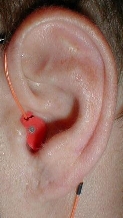jaakkopasanen
100+ Head-Fier
I actually got the surround setup room correction working. I just had renamed two room measurement files wrong. Now the demo contains recordings for 7.1 room response corrected HRIR.
I'll need to write the measurement guide still but for now the most eager ones can read through the updated processing documentation and play around with webcam mic placement helper. That thing leaves a ghost behind when taking a picture which can be used to place the room measurement mic in the same location where the binaural mic was. The seven rectangles in right side are slots for different measurements. Select a slot by clicking it and the picture will be saved to that slot. Clicking another slot will take it's ghost to the big picture. Like so: https://i.imgur.com/vKwrEGI.png. Here the microphone stand is in front of me and you can see both my face and the measurement microphone. It's not the best of all solutions for the problem but serves for now. It would be better to have the webcam above the listening position looking down.
I'll need to write the measurement guide still but for now the most eager ones can read through the updated processing documentation and play around with webcam mic placement helper. That thing leaves a ghost behind when taking a picture which can be used to place the room measurement mic in the same location where the binaural mic was. The seven rectangles in right side are slots for different measurements. Select a slot by clicking it and the picture will be saved to that slot. Clicking another slot will take it's ghost to the big picture. Like so: https://i.imgur.com/vKwrEGI.png. Here the microphone stand is in front of me and you can see both my face and the measurement microphone. It's not the best of all solutions for the problem but serves for now. It would be better to have the webcam above the listening position looking down.























